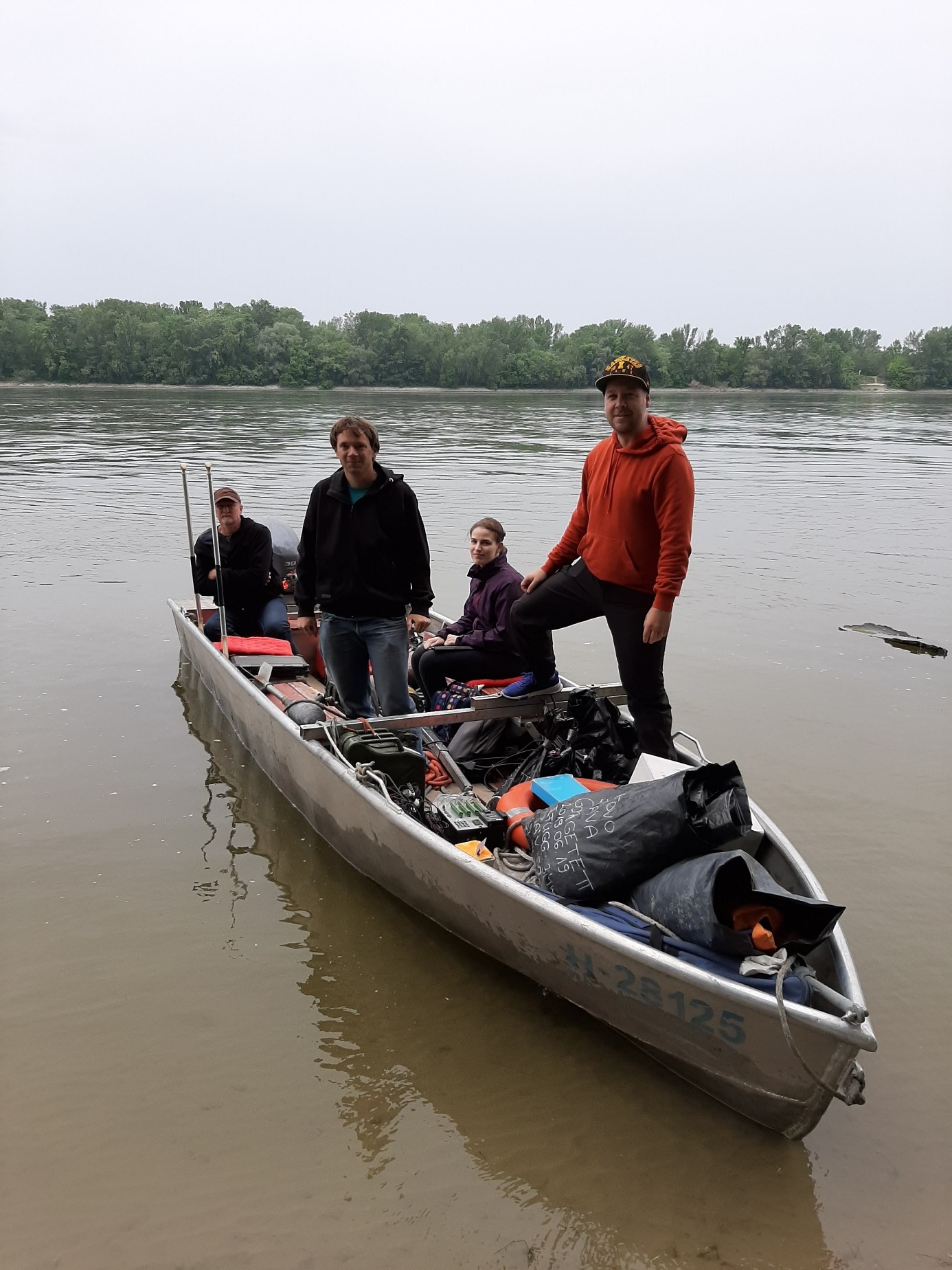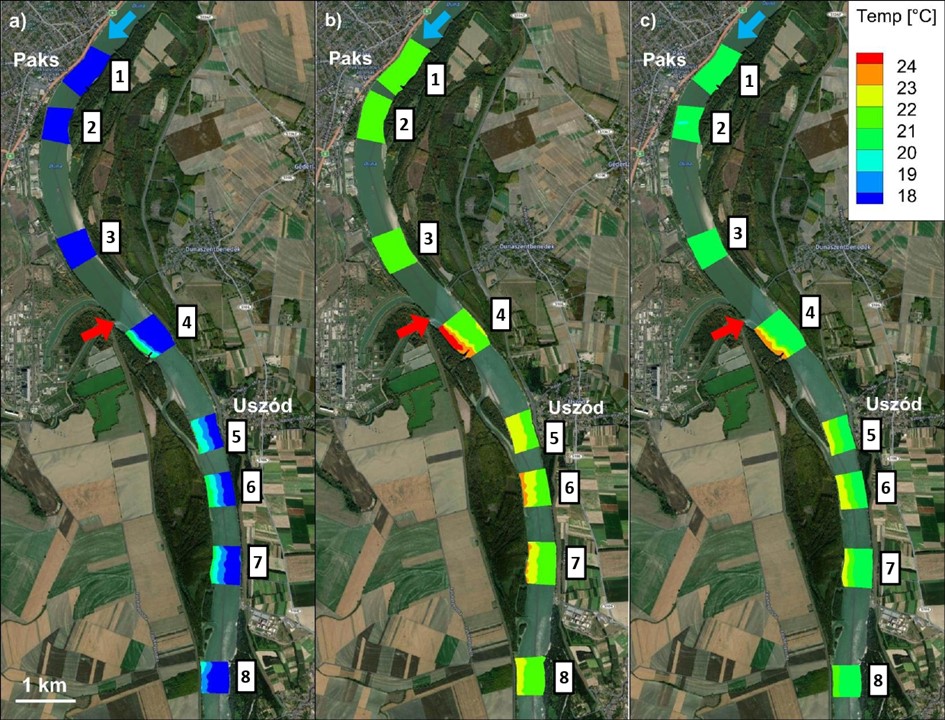Experts from the ELKH Balaton Limnological Research Institute (BLKI), in cooperation with colleagues from other institutions, investigated the impact of the spent cooling water from the Paks Nuclear Power Plant on the environmental conditions and fish population structure of the River Danube in a project implemented within the National Laboratory for Water Science and Water Safety. Researchers have shown that, although the hydromorphology of the river is significantly influenced by the inflow over a few hundred meters, the structure of the fish population is mainly determined by human influences on a larger scale. The results of the study were published in the journal Ecohydrology.

Photo: Tibor Erős
The plume of the already warmed cooling water discharged back into the Danube can be clearly traced on the temperature map created by Vivien Füstös, a PhD student at the Department of Hydraulic and Water Resources Engineering of the Budapest University of Technology and Economics (BME). The researchers have used this map to show that although the inflow strongly influences the hydromorphology of the river – such as water depth, flow velocity, bed material composition and temperature – over a few hundred meters, the structure of the fish population is mainly determined by human influences on a larger scale. It was found that the paved and natural shorelines of the coastal zone, the Danube groins and the tributaries and sandbars behind them have a greater impact on the distribution and abundance of fish species than the inflow of the cooling water. The supervisors of Vivien Füstös’ PhD thesis were Tibor Erős, Director of BLKI and János Józsa, a professor at BME. The research work is a good example of effective cooperation between Hungarian research institutes and universities.
In addition to BLKI researchers, experts from the Department of Hydraulic and Water Resources Engineering of BME, the Danube-Ipoly National Park, the Research Institute for Fisheries and Aquaculture of the Hungarian National Agricultural Research and Innovation Centre (NARIC) and the Institute of Aquatic Ecology at the ELKH Centre for Ecological Research (CER) participated in the joint field surveys.

Temperature profile of the studied segments of the Paks Danube section in May (a), July (b) and September (c) 2020. The red arrow indicates the point where the used cooling water is discharged (hot water inlet). The maps were prepared by Vivien Füstös.